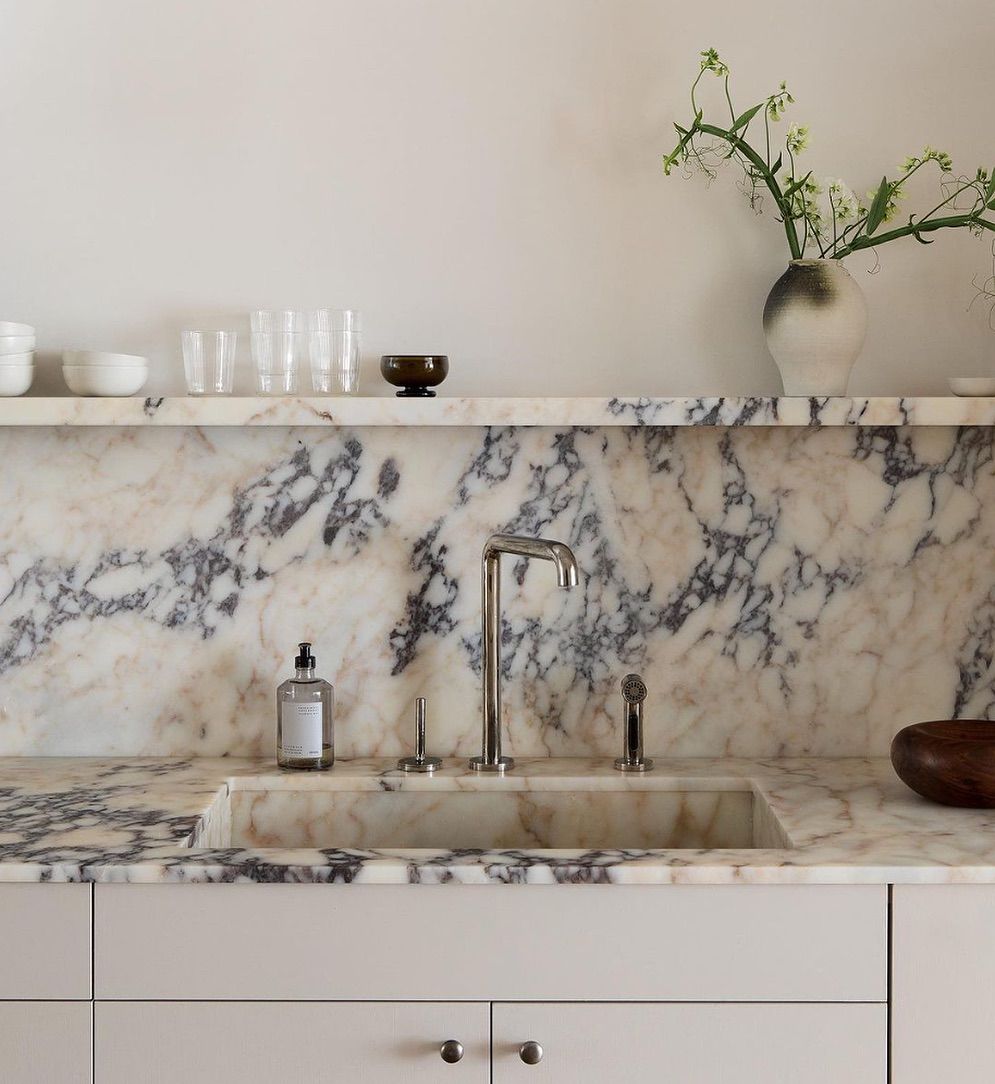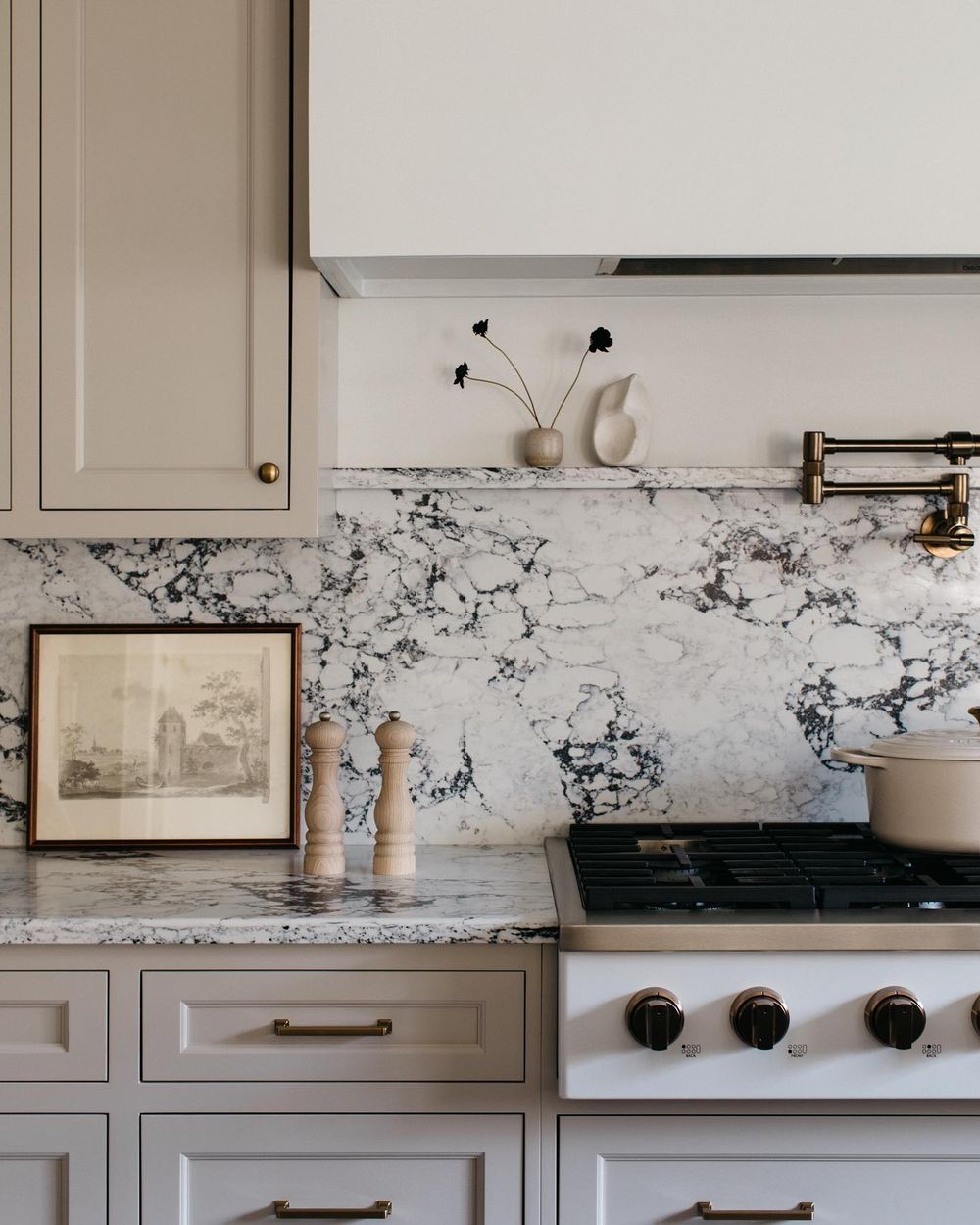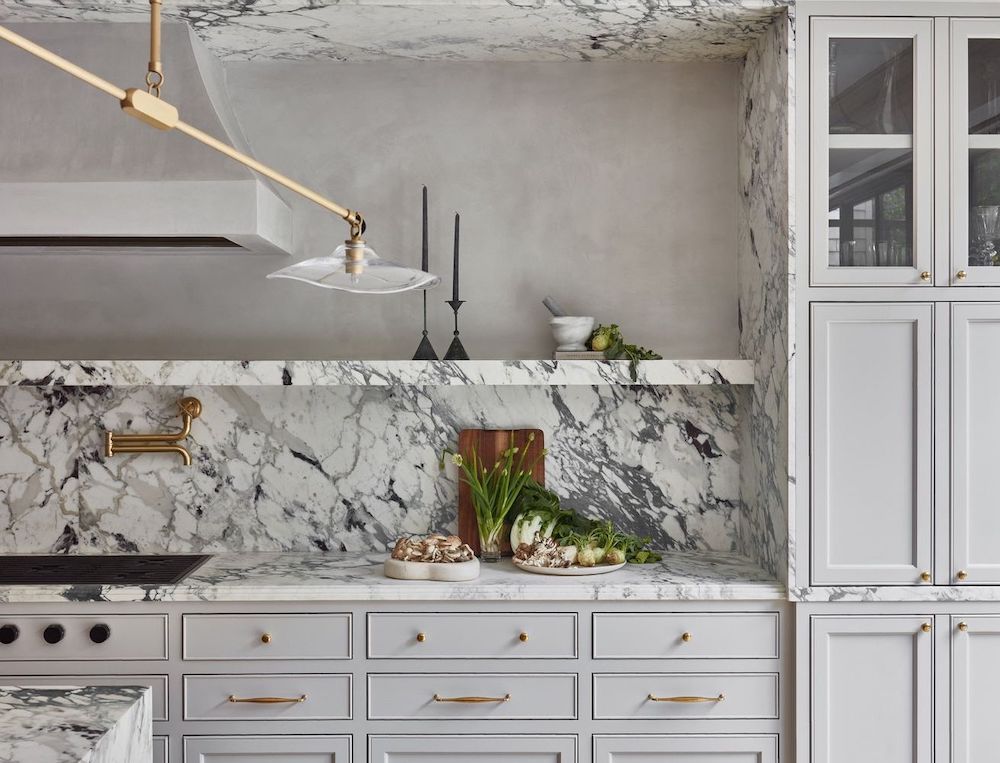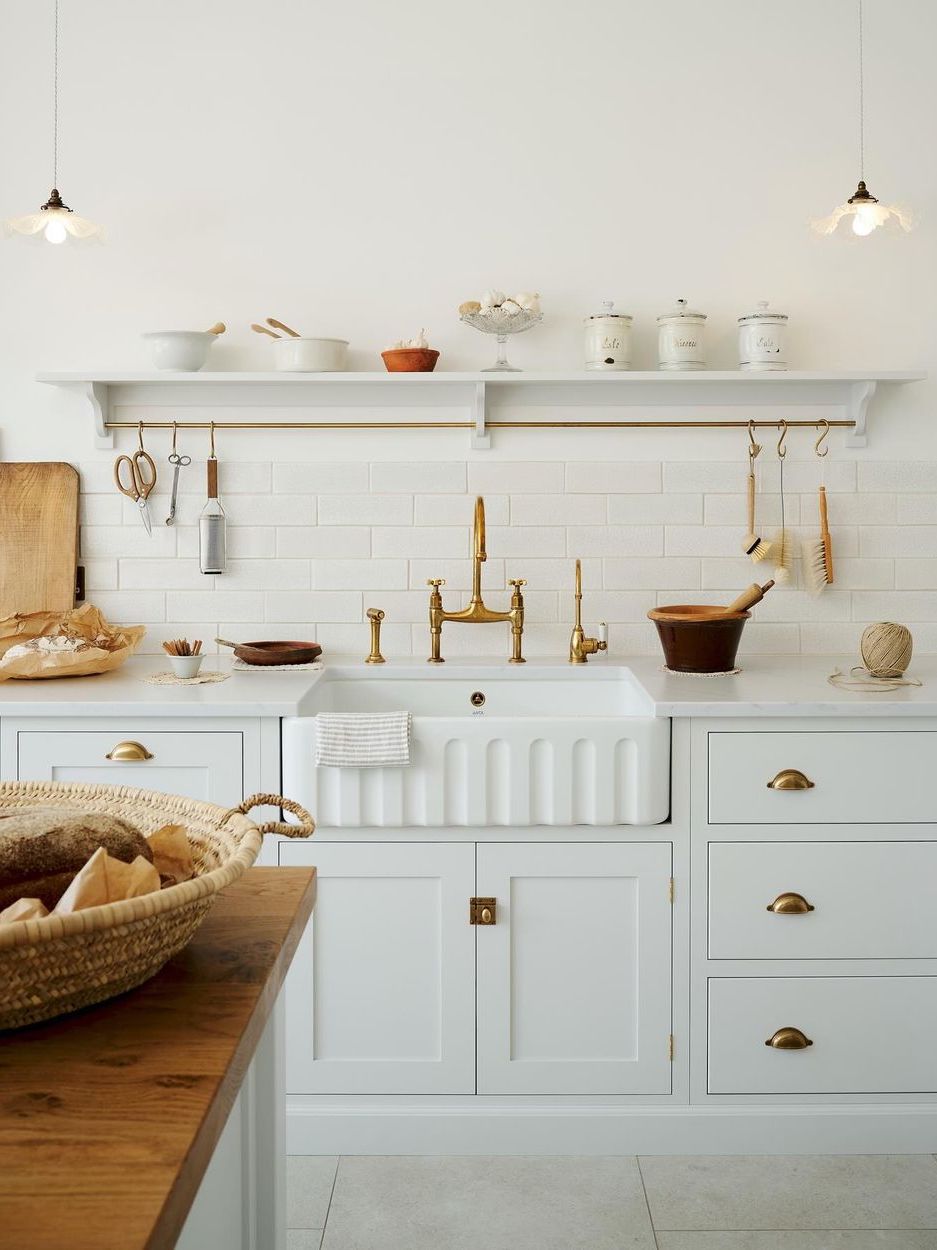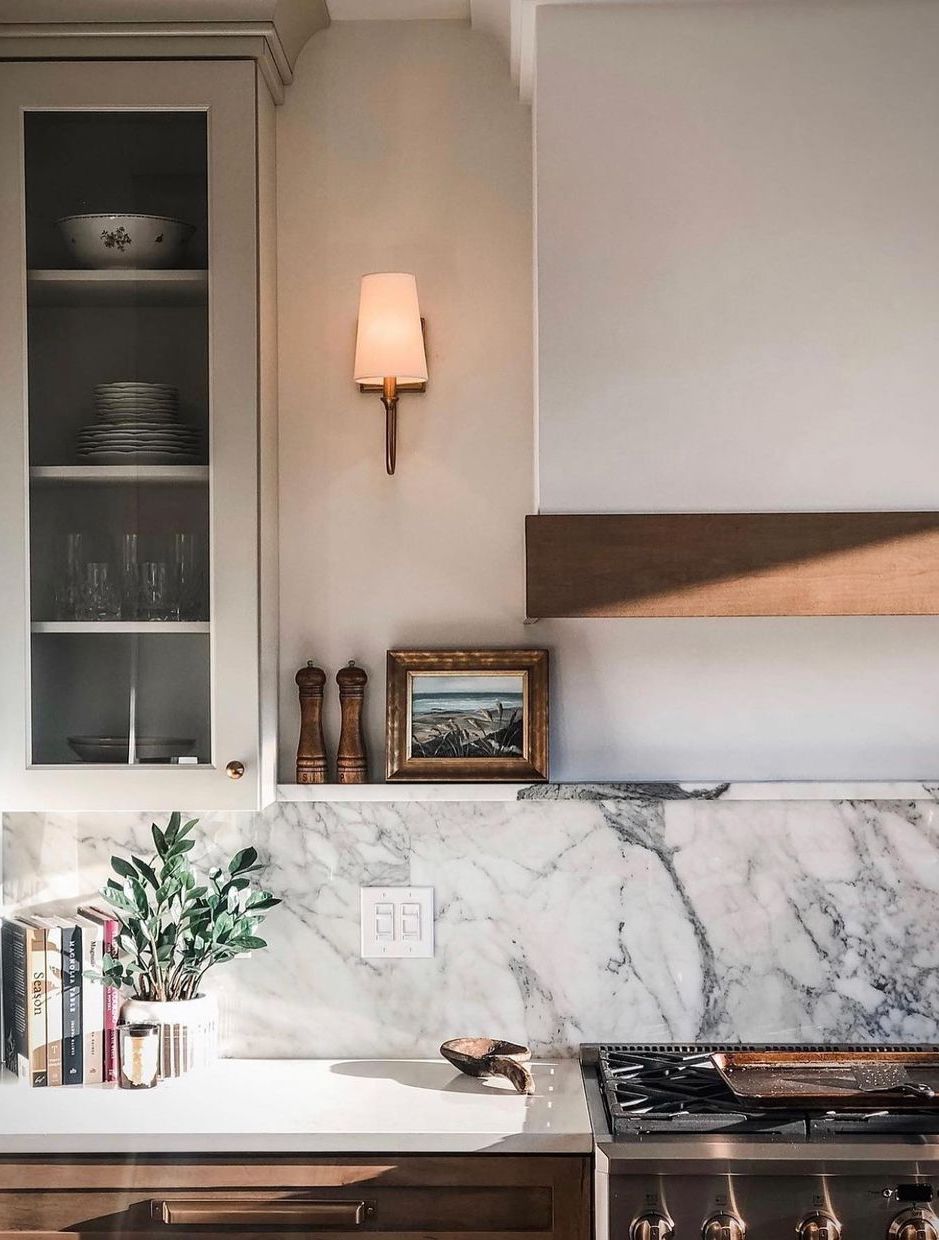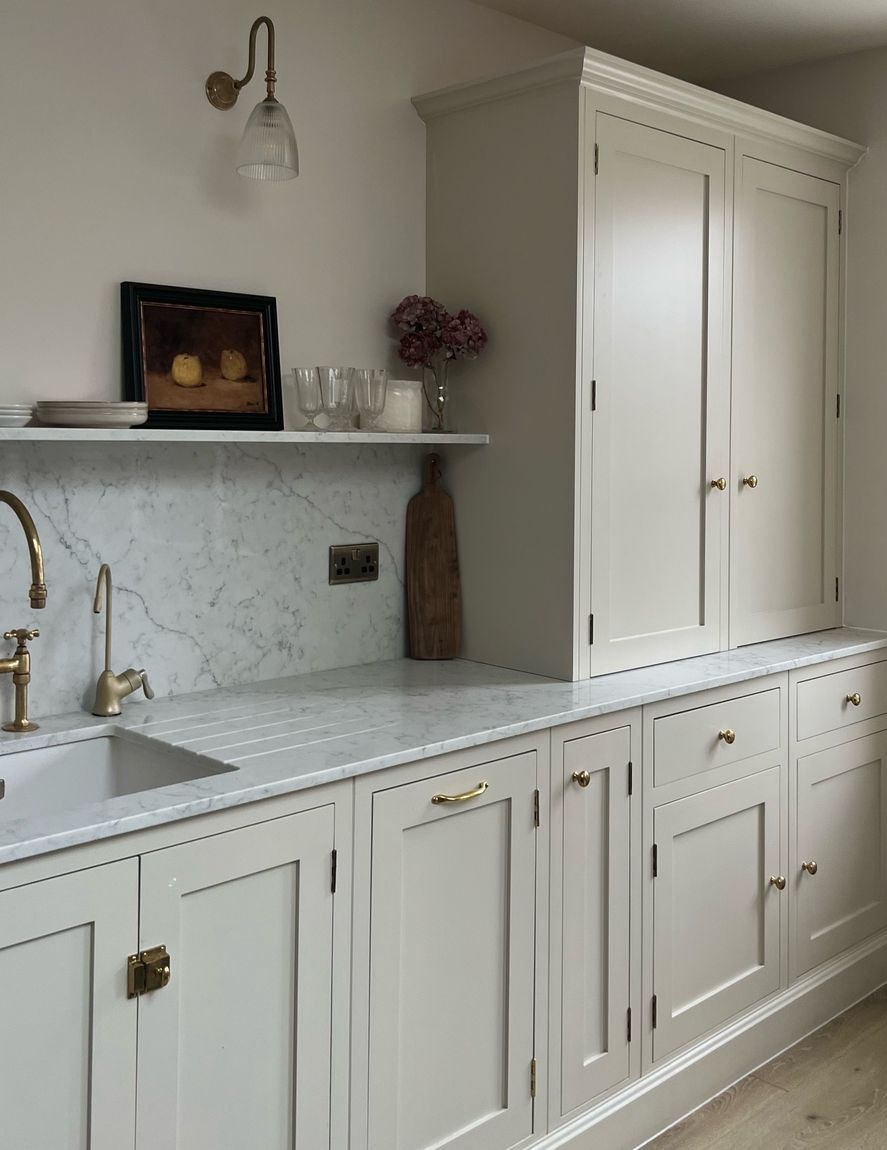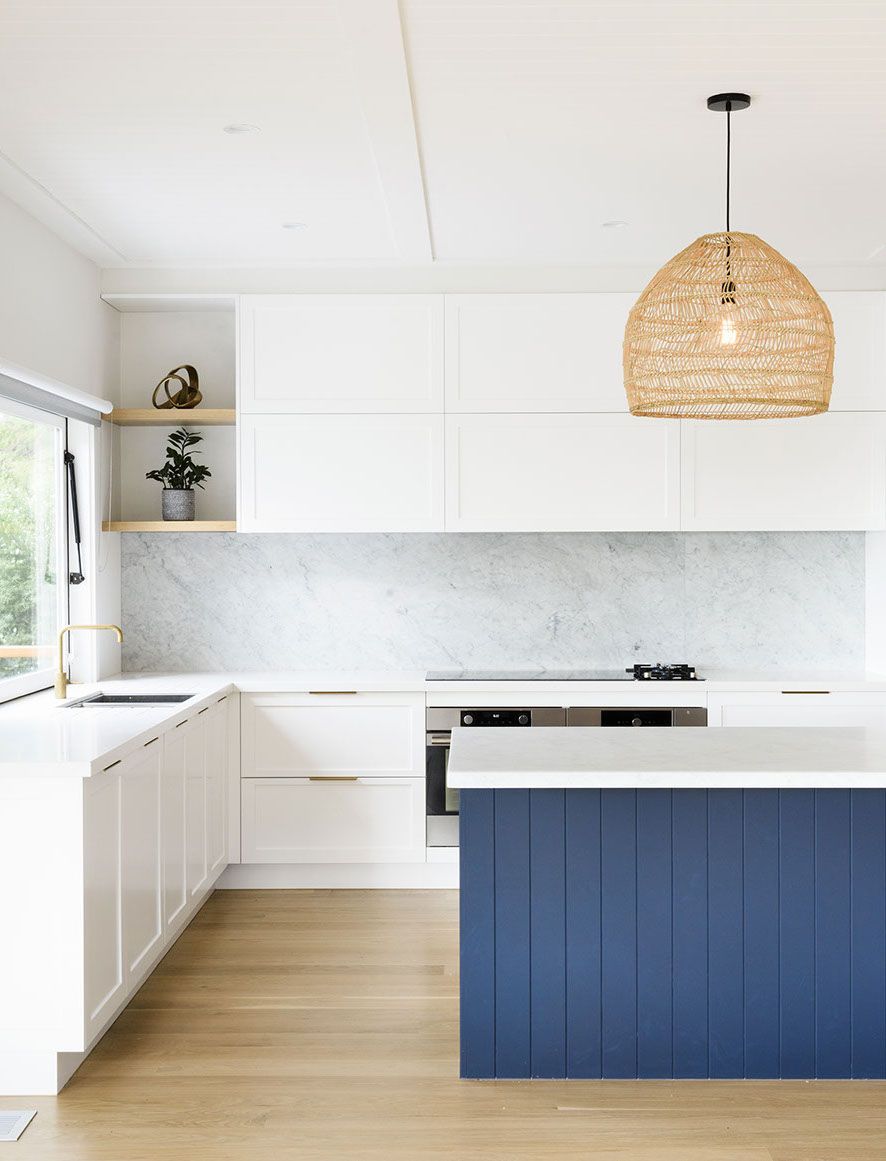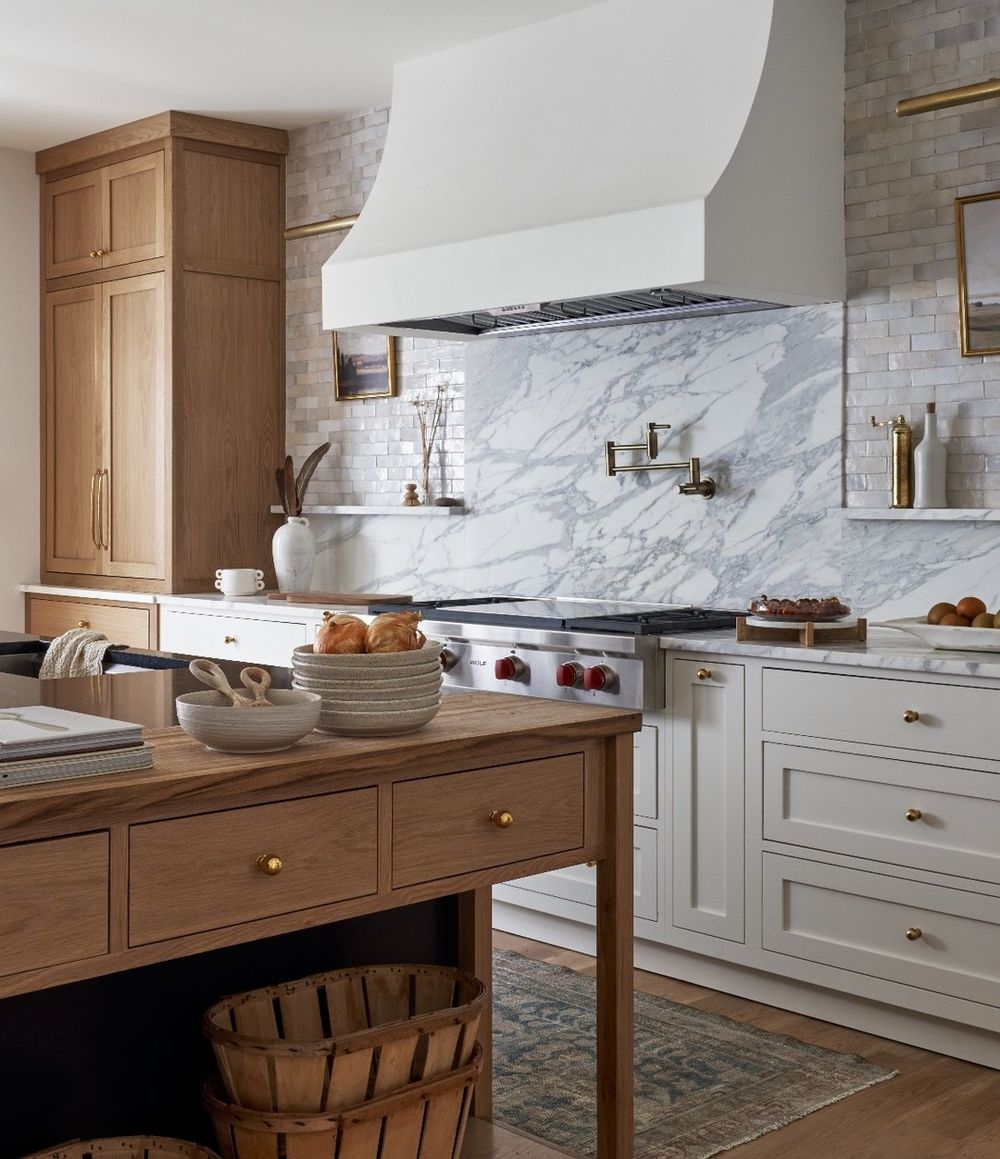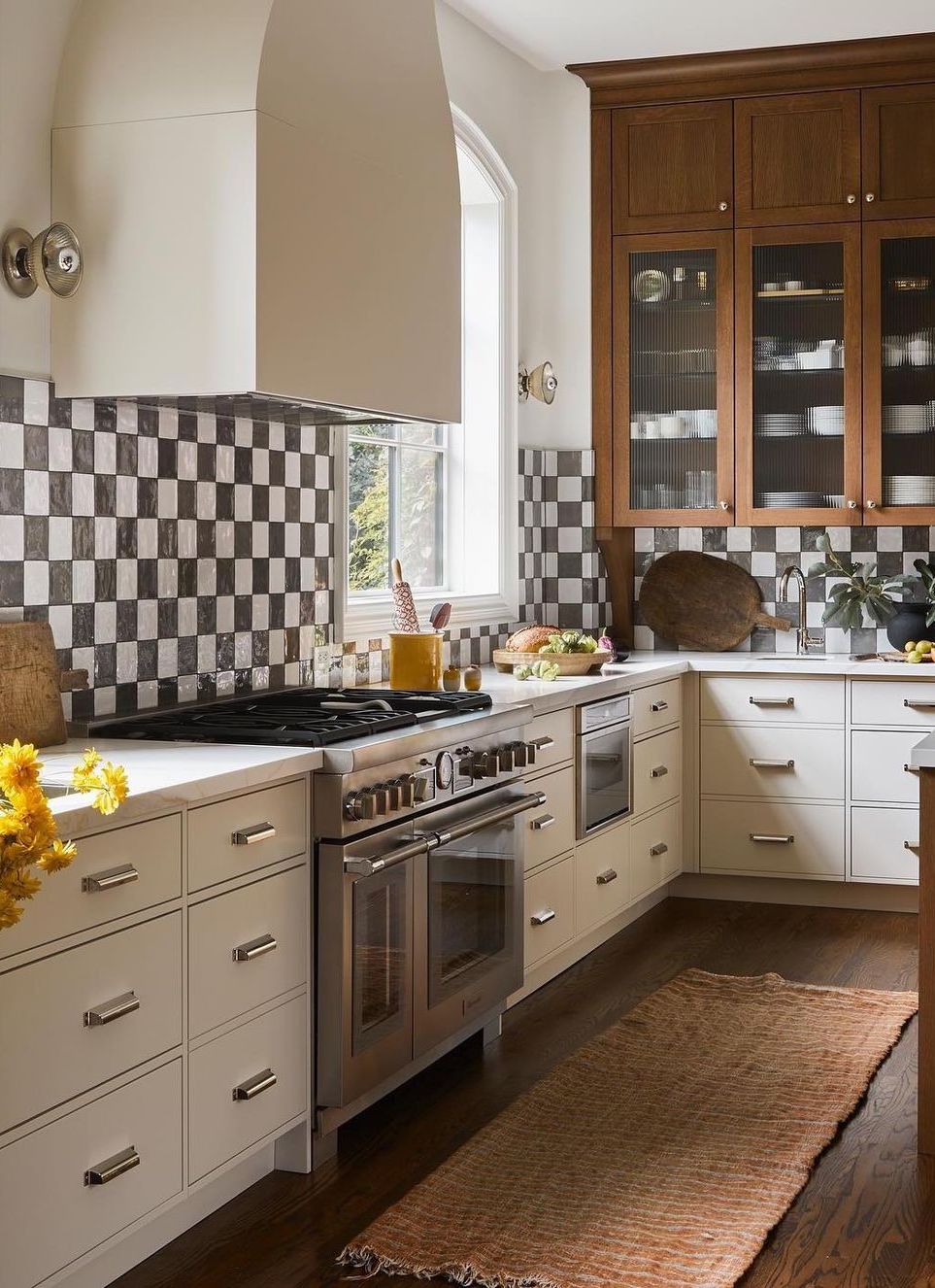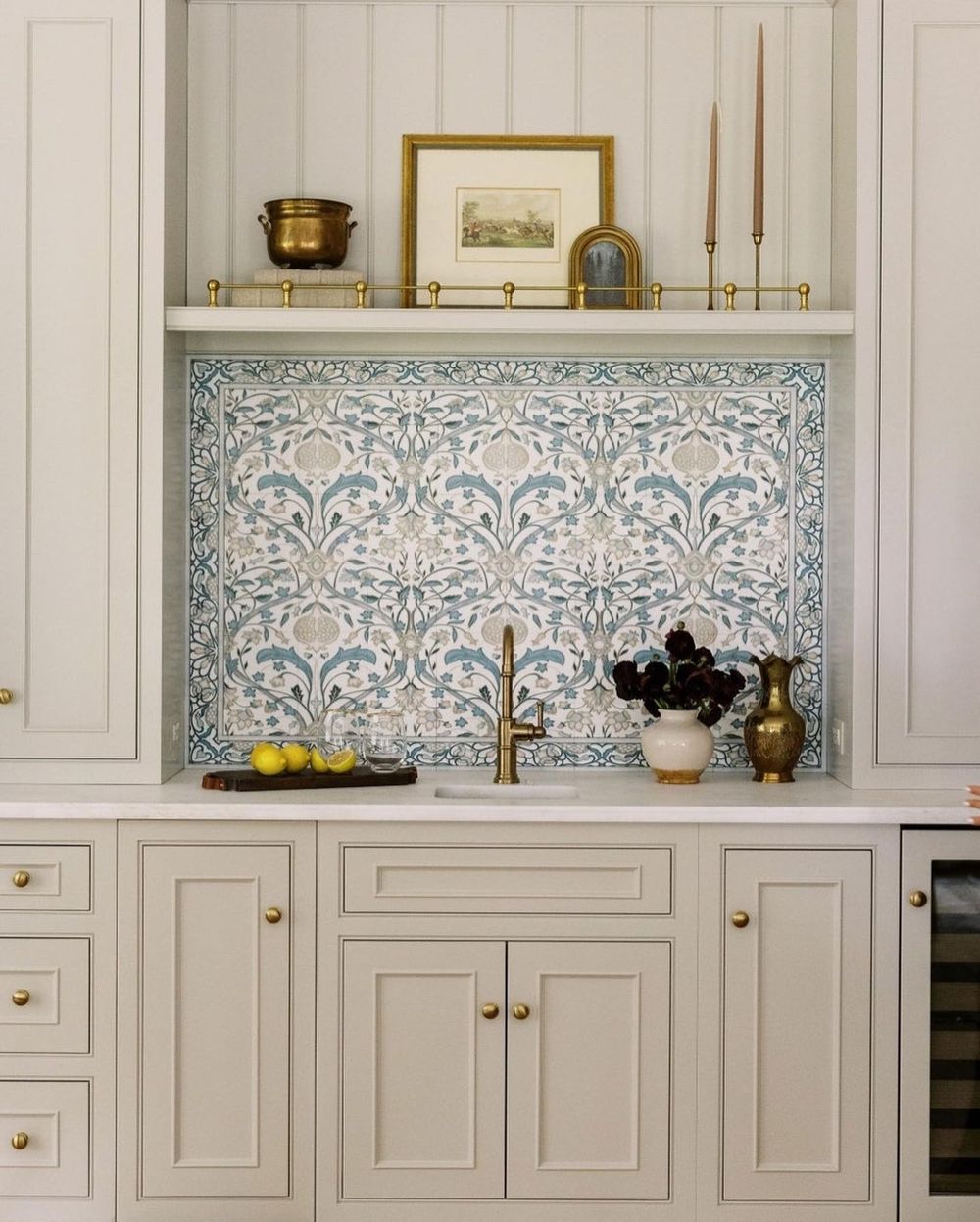The kitchen is often the heart of the home, and a well-designed backsplash can transform this essential space into a stylish statement. Enter the backsplash ledge—a versatile design feature that not only enhances the aesthetic appeal of your kitchen but also provides practical use and creative opportunities.
Whether you’re displaying colorful ceramics, fresh herbs, or decorative accents, this understated element brings functionality and flair to your cooking haven. Let’s explore how to make the most of your backsplash ledge with thoughtful decorating tips and inspiring ideas.
What are Kitchen Backsplash Ledges?
Understanding kitchen backsplash ledges is crucial for anyone looking to enhance their culinary space with both functionality and style.
A backsplash ledge, typically located at the intersection of the wall and countertop, serves as a transitional element that bridges the gap between these two surfaces. It provides a practical solution for preventing food splatters and stains from reaching the wall while offering a convenient spot for displaying decorative items, such as kitchen utensils, potted herbs, or small artwork.
When designed thoughtfully, the backsplash ledge can complement the kitchen’s overall aesthetic by incorporating materials that harmonize with the countertops, cabinetry, and flooring.
Popular materials for these ledges include ceramic tile, natural stone, and glass, each providing unique textures and colors that can enhance the visual interest of the kitchen.
The height and depth of a backsplash ledge can significantly affect its usability; a wider ledge may offer more room for storage or decor, while a narrower one can create a sleek, minimalist look.
Ultimately, the integration of a backsplash ledge into kitchen design not only elevates the space’s functionality but also showcases the homeowner’s personal style and attention to detail.
Benefits of Installing a Backsplash Ledge
Installing a backsplash ledge in the kitchen offers many benefits that enhance both functionality and aesthetic appeal. One of the primary advantages is the extra countertop space it provides, allowing for easy access to frequently used kitchen items such as cooking oils, spices, and utensils. This convenient ledge becomes a practical staging area while preparing meals, promoting a more organized and efficient cooking environment.
The ledge serves as a decorative element, enabling homeowners to exhibit personal style through beautiful dishware, cookbooks, or decorative items that reflect their culinary passions. With various materials available, from tiles to glass to natural stone, a backsplash ledge can also complement the overall design theme of the kitchen, enhancing its visual interest.
Beyond aesthetics, the backsplash ledge protects the wall from splashes and stains, making clean-up a breeze and contributing to the longevity of the wall surface. Furthermore, it can act as a visual divider between different areas in an open-plan kitchen, providing a sense of separation while maintaining an inviting and cohesive space.
Overall, a backsplash ledge not only enriches the kitchen’s functionality but also elevates its design, making it a worthwhile investment for any home.
Materials Used for Backsplash Ledges
When choosing materials for backsplash ledges in kitchen design, a variety of options exist to enhance both functionality and aesthetic appeal.
One popular choice is ceramic or porcelain tiles, which offer a wide range of colors, patterns, and textures, making them versatile for various design styles. These tiles are not only easy to clean and maintain but also provide a durable surface that can withstand the rigors of a busy kitchen. Natural stone options like granite or marble add a touch of elegance, with their unique veining and coloration offering distinctive character to each installation.
While more expensive, they bring a luxurious feel to the space, though they may require periodic sealing to maintain their integrity. For a modern vibe, glass tiles and panels can create a sleek, reflective surface that enhances light and space, making them perfect for smaller kitchens. Metal accents, such as stainless steel or copper, can provide an industrial edge and are incredibly easy to wipe down, ideal for home chefs.
Lastly, reclaimed wood brings warmth and a rustic feel, making it an attractive option for farmhouse or eclectic designs, though it does require careful treatment to withstand moisture. As each material has its own properties and aesthetic qualities, the choice depends on personal style, upkeep preferences, and the overall theme of the kitchen.
Design Ideas for Backsplash Ledges
When considering design ideas for backsplash ledges in a kitchen, it’s important to think about both aesthetics and functionality. A backsplash ledge not only enhances the visual appeal of the space but also offers a practical area for displaying decorative items or storing frequently used kitchen tools.
One popular design idea is to use a natural stone or ceramic tile backsplash that extends slightly beyond the countertop, creating a ledge with a clean, modern look. Rounding the edges of the ledge can soften the overall aesthetic while minimizing the risk of accidental bumps. For those leaning towards a more rustic vibe, reclaimed wood accents can be integrated into the backsplash design, providing a warm, inviting contrast to sleek cabinetry and stainless steel appliances.
Floating shelves can also be incorporated into the backsplash ledge, allowing for the placement of herbs, spices, or small potted plants, which adds greenery and life to the kitchen and enhances the cooking experience by keeping fresh ingredients at hand.
Layering different materials, such as pairing glass tiles with metallic accents, can create a dynamic visual effect and add texture to the kitchen. Further, consider incorporating LED lighting beneath the backsplash ledge. This highlights the materials used and provides functional lighting for food preparation and ambiance during meals.
For a more curated look, the ledge can also act as a mini showcase for decorative jars, cookbooks, or artisanal ceramics, allowing personal touches to shine through. Awell-designed backsplash ledge can transform an ordinary kitchen into a stylish and functional space that reflects your personality and enhances the culinary experience.
Maintenance and Cleaning Tips
Maintaining and cleaning your kitchen backsplash ledge is essential for prolonging its lifespan and functionality. A simple yet effective approach to cleanliness begins with regular dusting and wiping down the surface with a soft cloth to prevent the buildup of grease or grime.
For deeper cleaning, consider using a mild detergent mixed with warm water; this gentle solution is effective for most materials without causing damage. Avoid abrasive cleaners or scrubbers, as these can scratch or dull the finish of your backsplash.
For glass or tiled backsplashes, a solution of vinegar and water can work wonders, effectively removing stains and fingerprints while keeping the shine intact. If your backsplash is made of natural stone, such as granite or marble, it’s crucial to use pH-balanced cleaners specifically designed for stone to avoid etching the surface.
Sealing the grout lines periodically can help prevent discoloration and water infiltration, ensuring the ledge remains pristine and serves its purpose for years to come.
Lastly, don’t forget the corners and edges, as grime can accumulate in these overlooked areas; a small brush or an old toothbrush can be handy for reaching these spots. By following these maintenance tips, you can ensure that your kitchen backsplash ledge remains a stunning focal point and practical feature in your culinary space.
Integration with Kitchen Décor
The kitchen backsplash ledge serves not only a functional purpose but also acts as a crucial element in the overall kitchen décor. This often overlooked feature can become a focal point of the room, seamlessly integrating style with practicality.
By choosing materials and colors that harmonize with the surrounding elements, such as cabinetry and countertops, the backsplash ledge can enhance the kitchen’s aesthetic. For instance, a sleek, minimalist ledge made of polished marble or a rustic wooden shelf can echo the kitchen’s design theme, whether it’s modern, traditional, or country-inspired.
This ledge can provide an opportunity for personal expression through decorative elements like potted herbs, artisan ceramics, or stylish cookbooks, transforming it into a curated display that invites warmth and character.
Properly accessorizing the backsplash ledge with thoughtfully chosen items can further elevate the kitchen’s design, creating a cohesive look that is both functional and visually appealing.
Beyond mere decoration, the backsplash ledge offers a practical space for everyday items—such as oils and spices—while keeping countertops clutter-free, thus balancing beauty with utility in the kitchen’s overall design narrative.
DIY Installation vs Hiring a Professional
When considering the installation of a kitchen backsplash ledge, homeowners often face the decision between a DIY approach and hiring a professional. DIY installation can be an appealing option for those who enjoy hands-on projects and want to save on labor costs. With countless online tutorials and resources, many people find that they can successfully tackle this type of home improvement task.
A DIY project allows complete control over the design choices, including materials, colors, and patterns, enabling homeowners to inject their personal style into the kitchen.
However, the DIY route requires a significant investment of time and effort, as well as a certain level of skill in tiling, cutting, and grouting. Mistakes made during installation can lead to costly repairs and an unsatisfactory final appearance.
On the other hand, hiring a professional can alleviate much of the stress associated with the installation process. Professionals bring expertise and experience, ensuring that the backsplash ledge is installed correctly and efficiently. They are familiar with various materials and the latest design trends, which can help you make informed decisions that enhance the overall aesthetic of their kitchen. Furthermore, professionals often guarantee their work, providing peace of mind that any potential issues will be addressed promptly.
However, this option typically comes with a higher price tag, which may not fit every budget. Ultimately, the choice between DIY installation and hiring a professional depends on your confidence in their skills, budget constraints, and level of convenience.
![24'' Longer Faucet Mat for Kitchen Sink Splash Guard[7° Slope Fast Self-draining][Snap Lock Fit]Kitchen Sink Faucet Mat Splash Guard Kitchen Sink Area Water Splash Guard Behind Faucet Draining Mat](https://m.media-amazon.com/images/I/51REMoA18tL._SL500_.jpg)
